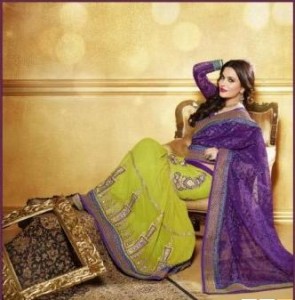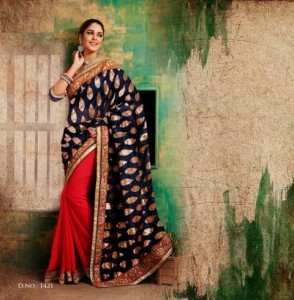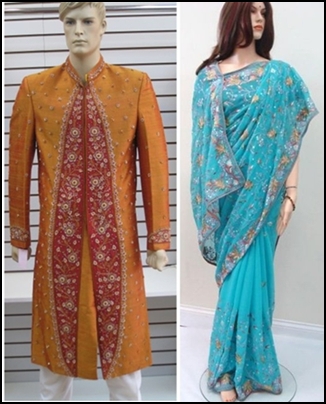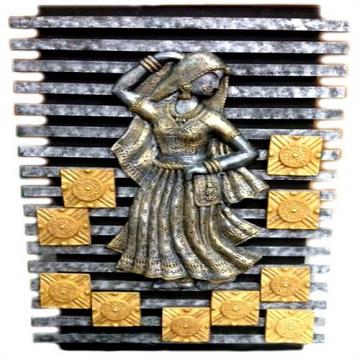The History and Evolution of Saree
India is the land of culture, rich in heritage and unique in the eating, wearing and living habits of her inhabitants. Western people are in awe of Indian culture and in fact they are quite fascinated with saree, the quintessential Indian clothing for women. When we look at saree we look at its intricate weaving, but only a few of us know about the history and evolution of the 6 yard long cloth.
 Saree, which is draped around the body, has an illustrious history. The origin of the word is from ‘sati’ which is the Sanskrit word for a strip of cloth. According to historical suggestions, the origin of the saree can be traced back to the Indus Valley Civilization which dates to around 2800 to 1800 BC. In fact, it is believed that the traditional Indian attire of men, Dhoti is the predecessor of saree. Historians also believe that dhoti was the item of clothing that both women as well as men wore until 14th Century. The different regions, occupations and classes determined the style in which the garment was worn. Over a period of time, the style of saree wearing has evolved. The most notable changes were observed during the Muslim rule and British rule.
Saree, which is draped around the body, has an illustrious history. The origin of the word is from ‘sati’ which is the Sanskrit word for a strip of cloth. According to historical suggestions, the origin of the saree can be traced back to the Indus Valley Civilization which dates to around 2800 to 1800 BC. In fact, it is believed that the traditional Indian attire of men, Dhoti is the predecessor of saree. Historians also believe that dhoti was the item of clothing that both women as well as men wore until 14th Century. The different regions, occupations and classes determined the style in which the garment was worn. Over a period of time, the style of saree wearing has evolved. The most notable changes were observed during the Muslim rule and British rule.
To an Indian woman, culturally saree denoted honour. In the epic Mahabharata, this idea was illustrated through the disrobing of Draupadi, who was lost to the Kauravas by her husband Yudhishthir in a game of dice. During the disrobing she prays to Lord Krishna for protection. With the blessings of Lord Krishna, the saree was bestowed with unending length which helped her save her honour.
 In some regions of southern India, this Indian clothing for women is 9 yards long instead of the usual 6 yards. When you wear a saree, you leave the midriff bare since according to the Hindus, navel is where the source of creativity and life is. It is very practical from other view points as well. If we consider the climatic and geographical factors of the Indian sub-continent, it makes perfect sense to wear something like this in the humid and hot weather. A cotton light coloured cloth wrapped around the body allows you to expose to the surrounding air and at the same time covers the essentials and maintains the modesty perfectly.
In some regions of southern India, this Indian clothing for women is 9 yards long instead of the usual 6 yards. When you wear a saree, you leave the midriff bare since according to the Hindus, navel is where the source of creativity and life is. It is very practical from other view points as well. If we consider the climatic and geographical factors of the Indian sub-continent, it makes perfect sense to wear something like this in the humid and hot weather. A cotton light coloured cloth wrapped around the body allows you to expose to the surrounding air and at the same time covers the essentials and maintains the modesty perfectly.
Even now, women from various regions, drape the saree in different manners and style. The women of Maharashtra, Bengal, Orissa, Assam, Gujarat and parts of South India can be easily distinguished from the style of draping. Even the different regions promote various kinds of sarees- tant from Bengal, Kanjeevaram from South India, Benarasi from Varanasi, Bandhni from Rajasthan, Mekhla Chadar from Assam, Petni from Maharashtra, Phulkari from Punjab, Pashmina from Kashmir, etc.
The Indian clothing for women is loved by all and Indians should definitely wear it. In fact, even those who have never worn it or do not belong to the Indian sub continent should definitely give this a try. From the fashion point of view also, nothing can make you look as effortlessly elegant as a saree.



